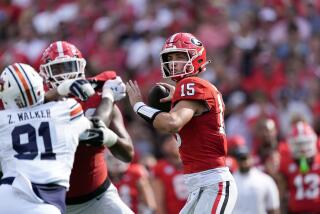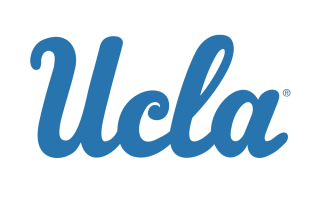New Ruling Won’t Have Everyone Heading to the Bank
- Share via
When Division I athletes were granted the right to work during the school year, local officials and athletes hailed the ruling as revolutionary.
As always with revolutions, where you stand affects how you view the new order, and local coaches, administrators and athletes had a variety of opinions on the ruling, which was passed Monday by the NCAA convention in Nashville, Tenn.
The key difference under the new rule is athletes will be allowed to work during the school year and earn up to the difference between the value of their scholarship and the estimated cost of attending their school.
For an athlete on a full scholarship, the difference could range between about $1,000 and $3,000, depending on the school. The new rule goes into effect Aug. 1.
At Long Beach State, the cost of full-time attendance for an academic year is estimated at $9,141 for a California resident, including fees, room and board, books, personal expenses and transportation.
Toby Metoyer, the starting center on the 49er women’s basketball team, receives a full athletic scholarship of $7,556.
Under previous NCAA rules, Metoyer was not allowed to earn any extra money during the academic year because she received a full scholarship. Under the new rules, she will be able to earn $1,585 at a job during the academic year. The extra money ostensibly could pay for personal expenses and transportation, which are not covered by the scholarship.
“Our [scholarship] stipend checks stop May 1, but school doesn’t end until the end of May. You always are worrying about how you’re going to pay your bills,” Metoyer said. “We could work during the summer, but most people can’t make enough money during only a couple of months in the summer to meet all the extra expenses.”
Metoyer might try to tell that to Donnie Rafter, a sophomore on the UC Irvine men’s volleyball team who receives $750 per academic year as a partial athletic scholarship.
Under previous NCAA rules, Rafter’s earnings from an outside job during the academic year could equal the value of a full, athletic scholarship at UC Irvine: $9,993.
Under the new rule, Rafter is eligible to earn more than $13,000 during the academic year. A nice idea for Rafter, but not very realistic.
He already works 10 hours per week as a supervisor at a gymnasium in Tustin. He has a student loan and lives at home to save money.
“I don’t have the time to work that much,” Rafter said. “We have three-hour practices and there is another hour to get taped, and then there’s classes and studying. Working is way down the list. It’s just not possible to work that many hours during the school year.”
Ed Carroll, Irvine’s associate athletic director for finance, said the rule was not intended for people who are on partial scholarships.
“It really only affects those on a full scholarship. They will be able to pick up a little extra money,” Carroll said.
Chris Dade, a junior, receives a full athletic scholarship to play basketball at Cal State Fullerton, and he expects to take advantage of the new opportunity to work during the school year.
“Any additional money we can make would go a long way to helping,” he said.
Local coaches commended the NCAA’s ruling but also expressed reservations.
“I think it’s a great decision,” said Fullerton basketball Coach Bob Hawking. “What just about all of us in this business have been saying is that it’s very difficult for kids to live on what we are able to provide them. Our kids get $590 a month, and that doesn’t go very far living in Orange County.”
Ray Ratelle, men’s volleyball coach at Long Beach State, expects the effect of the rule to be limited.
“You look at the academic responsibilities and the practice commitments these kids have; where do they find the time to work?” Ratelle asked. “Sure, there will be some who can. I just don’t see how many will be able to with everything they have to do. I just don’t see it.”
Many administrators are worried that the new rule would be a compliance nightmare. Among the concerns: keeping track of an athlete’s income so it doesn’t exceed the earnings cap, preventing influential boosters from hiring athletes and making sure athletes are actually working.
Fullerton women’s basketball Coach Deborah Ayres said the positive aspects outweigh any potential negatives.
“I think it’s the fair thing to do because athletes should have the same opportunity as other students to earn money,” Ayres said. “The difficulty is going to be monitoring it to assure that some schools don’t abuse it.”
The Associated Press and staff writers Lon Eubanks, Chris Foster and Jason Reid contributed to this story.
More to Read
Go beyond the scoreboard
Get the latest on L.A.'s teams in the daily Sports Report newsletter.
You may occasionally receive promotional content from the Los Angeles Times.










